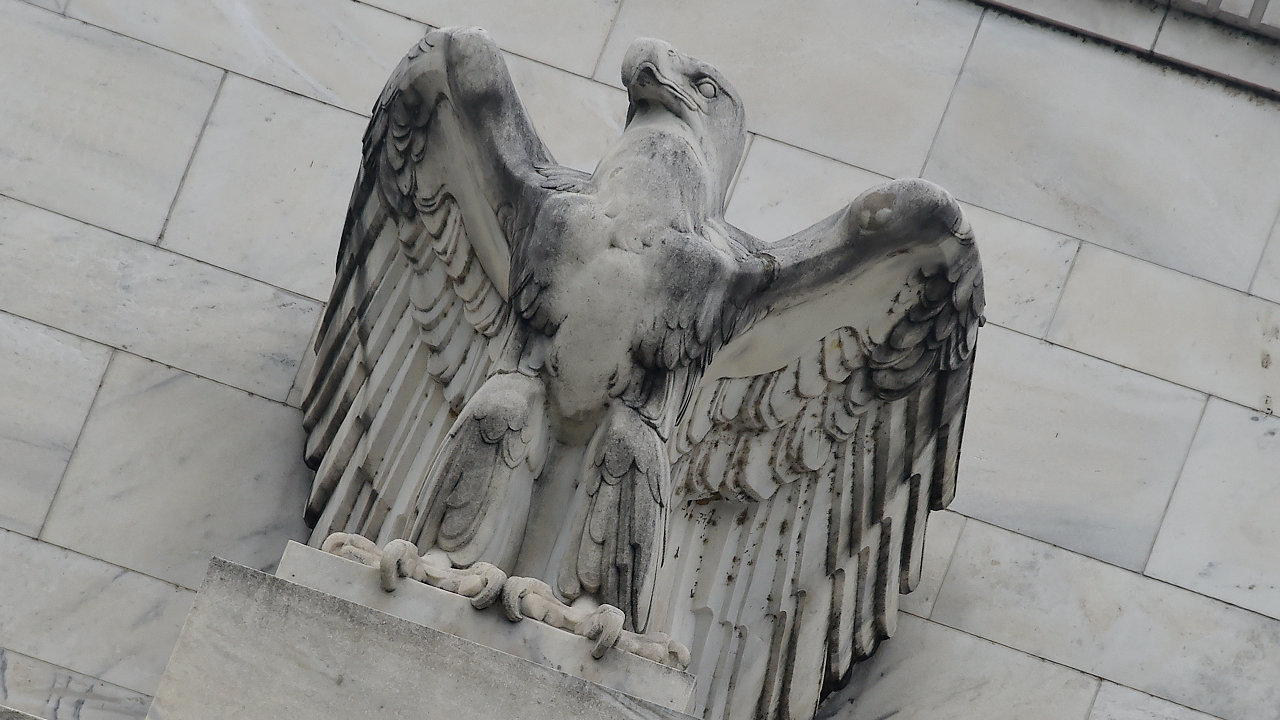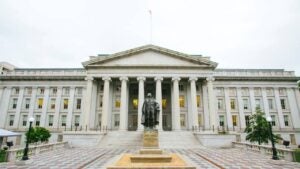What is the Federal Reserve’s Beige Book?

It’s not always about the numbers when the Federal Reserve makes its interest rate decisions.
On top of looking at key economic figures that track employment, inflation, financial stability and the like, officials also pay attention to stories and anecdotes from people on the ground, living and working in each of the Fed’s 12 regional reserve bank districts. That research is compiled in a report known as “the Beige Book.”
On many occasions, the report has proven to be a leading indicator, and experts say its value increases during times of economic distress, when data often gets outdated quickly. Still, experts have pointed out that you might want to take the report’s findings with a grain of salt.
Here’s everything you need to know about the Fed’s Beige Book, including why it matters and what it means for you.
What is the Fed’s Beige Book?
Officially known as The Summary of Commentary on Current Economic Conditions, the Fed’s Beige Book is a qualitative research report compiled by each of the Fed’s 12 regional reserve banks eight times a year, ahead of each Federal Open Market Committee (FOMC) meeting.
The report is broadly composed of one national summary, and then 12 individual reports breaking down local conditions in the jurisdictions managed by each of the Fed’s regional reserve banks in:
- Atlanta.
- Boston.
- Chicago.
- Cleveland.
- Dallas.
- Kansas City.
- Minneapolis.
- New York.
- Philadelphia.
- Richmond.
- San Francisco.
- St. Louis.
Each Beige Book features reports on topics that Fed officials care about, especially those related to its dual mandate. For instance, “prices” and “employment and wages” are included with every iteration in the broader national summary.
But the districts are given more free-reign with the topics they include in their individual reports, mainly basing them on what industries and sectors matter most to their areas. For instance, the New York Fed is one of five regional banks that has a “Banking and Finance” section. The Atlanta and Chicago Feds have an “agriculture” section, while the St. Louis and the San Francisco Feds have listed it more broadly: as “Agriculture and Natural Resources” and “Agriculture and Resource-Related Industries,” respectively.
When did the Fed start compiling its Beige Book?
Staff prepared the first version of the Beige Book for a Fed meeting in May 1970, though at the time, it was called the “Red Book” for the color of its cover at the time. The report wouldn’t be made public until 1983.
That was around the time when Rep. Walter Fauntroy, who was chairman of the House Subcommittee on Domestic Monetary Policy, pushed for more Fed transparency. He requested that the “Red Book” be published along with the Fed’s policy statement, though the committee would later decide to release it two weeks before each decision, a practice it still follows today. The Fed decided to keep sources and business contacts anonymous, mainly so they feel comfortable describing proprietary business conditions more freely.
Its inauguration to the public was marked by changing the color of the cover from red to beige, thus beginning its colloquial “Beige Book” reference.
How is the Beige Book put together?
Published eight times a year, each iteration of the Beige Book is managed by a different regional Fed bank, which writes both the national summary and then prepares for publication the content from the other 11 banks. The Kansas City Fed, for example, prepared the May 27 version of the Beige Book, published ahead of the June Fed meeting.
Teams of research economists at each of the 12 Fed banks gather anecdotal information from their local areas, interviewing key business owners, community contacts, area economists and other experts directly familiar with the region for insights into how each district is fairing under regional economic circumstances.
Such was the case for Bill Bergman, now director of research at Truth in Accounting, who spent the first five years of his 13-year stint at the Chicago Fed preparing the report. Each six weeks (the cycle for preparing the report), he would go to the Chicago Fed’s library and pick out six phonebooks at random, calling different firms from auto dealers to employment services.
“It’s getting out there and kicking the tires,” Bergman says of the Beige Book’s importance. “Economists sit behind their computers and look at spreadsheets, but in banking, it’s so important to get out there and actually physically examine the quality of local economic conditions.”
Why does the Beige Book matter?
Being named after the color beige — which seems like one of the least striking, blandest colors out there — might give the impression that the report should be glossed over as unimportant. And on its face, that might be confirmed, as the report contains no complex economic theories or puzzles; it has no numbers or equations. But its simplicity might be why it’s become a valuable complement to FOMC meetings: It allows Fed officials to hear directly from the people who are influenced and affected by their monetary policy decisions.
“Beige Book folks are sometimes looked down on as not being real economists, but that type of a process — informal discussions with leaders across the country — that’s important,” Bergman says. “With all the uncertainty in the economy, it’s important today to be talking to business leaders.”
During the coronavirus pandemic, the Fed’s Beige Book has become a valuable tool for Fed officials to hear from sources on the ground at a time when data can seem murky or outdated. Some experts have also said the Beige Book may have foreshadowed the housing crisis more than a decade ago, with widespread reports of mortgage delinquencies showing up as early as October 2006.
“The Beige Book was closer to seeing the deterioration in real-time than the people that were doing their crystal-ball gazing,” Bergman says. “It didn’t pick up on how bad that was going to be, but the Beige Book really was close to what was underway.”
Why should you approach the Beige Book with a skeptical eye?
But that’s not to say you shouldn’t take what you read verbatim. Labor shortages were first mentioned in the April 2010 Beige Book — when the U.S. economy was still in the depths of the Great Recession. Unemployment was 9 percent then, and would go on to rise as high as 10 percent. More than 10 years later, after a decade-long recovery, the economy would go on to add 20.5 million jobs for a record 100-plus months as joblessness pushed to half-century lows as far as 3.5 percent.
One of the Fed’s most dovish officials, Minneapolis Fed President Neel Kashkari, has rejected the notion about the labor market tightness on repeat occasions. “I don’t see a widespread labor shortage; I see businesses not wanting to raise wages,” the official said in a January 2019 interview with the Minneapolis-St. Paul Business Journal. On many occasions, he’s asked that employers “show me the money” by boosting workers’ pay, if they’re going to repeat that they’re having trouble finding skilled workers.
And just because the Beige Book exists, doesn’t mean it steers the conversation all that much. Fed officials will always stress that they’re data-dependent, meaning they’d like to see any moves in inflation or unemployment before deciding whether it’s right to raise or lower interest rates. Although conversations with contacts are noted in discussions, the Beige Book has not been directly mentioned over the past two years of Fed meetings, according to records of the FOMC’s gatherings.
Bottom line
While the Beige Book represents an important tool for monetary policy, it’s better thought of as a dot in the overall picture. And while anecdotes can many times offer a more forward-looking view of the economy than data, interpreting what stories show about the broader economy isn’t always black and white. It’s probably somewhere in between, like the color beige itself.
It highlights the Fed’s overarching goal: crafting one uniform policy for the entire nation. While some parts of the country might be faring better or worse, that kind of policy lends itself to looking more closely at national, broad-based figures.
“Economists have enough trouble figuring out what happened last month as opposed to what’s going to happen a year from now,” Bergman says. “It’s going out and talking to real businesses and other sources for real, current economic analysis. It’s not perfect by any stretch, but it’s a worthy supplement — and more worthy than a lot of people think it is.”
Featured image by Olivier Douliery of AFP via Getty Images.





